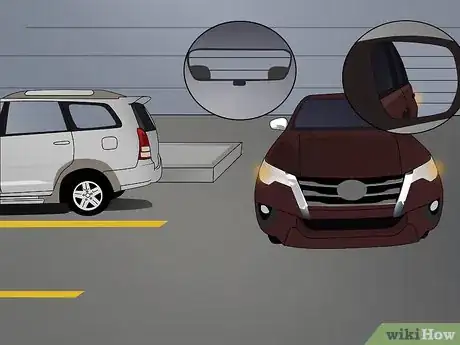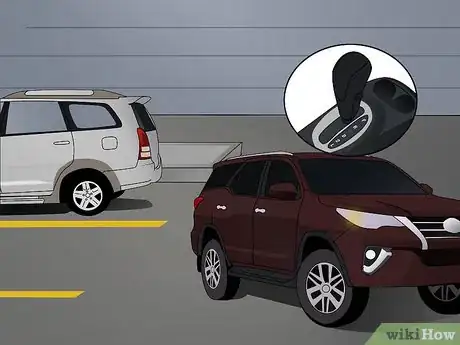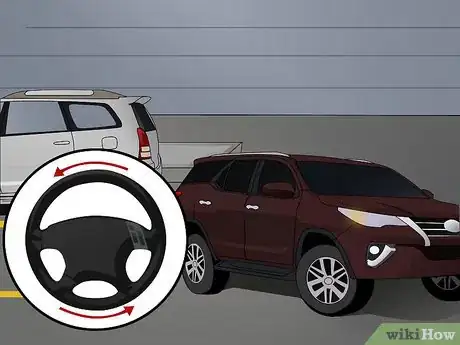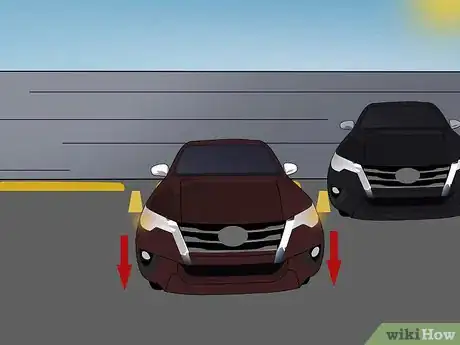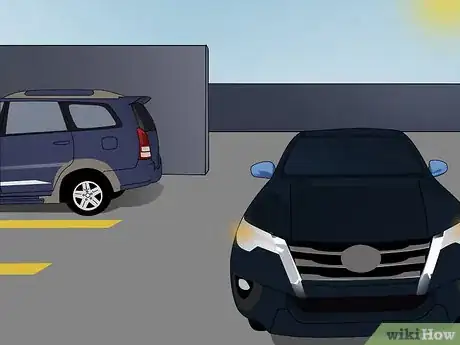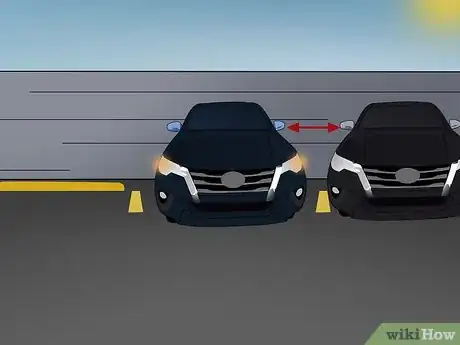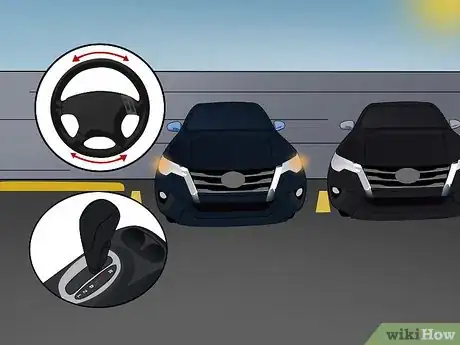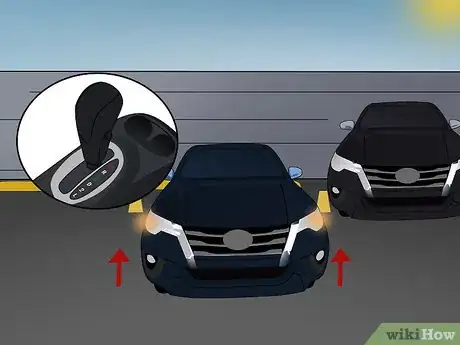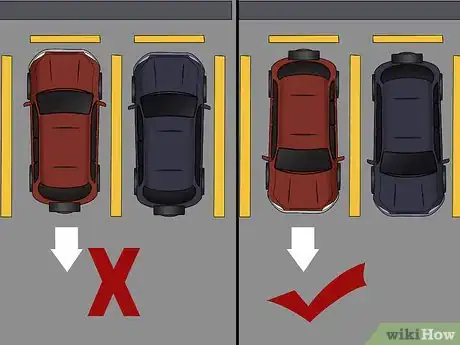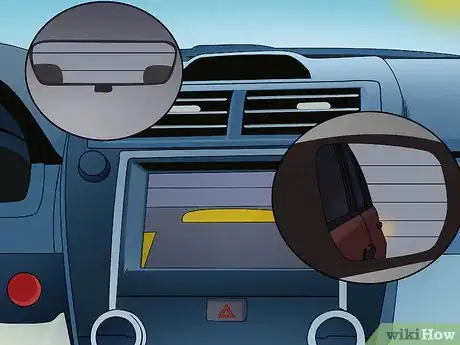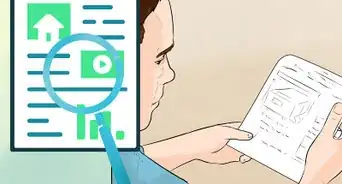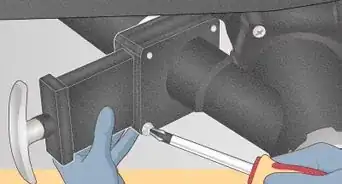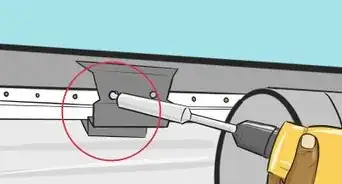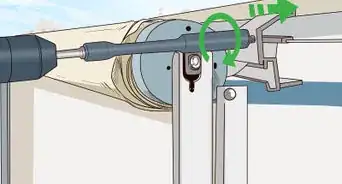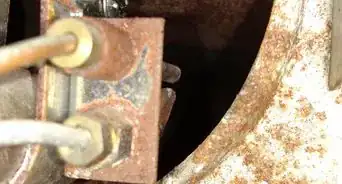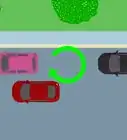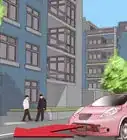This article was co-authored by Bruce Storrs. Bruce Storrs is a Driving Instructor and the President & CEO of North County School of Driving in San Marcos, California. With more than 31 years of experience, he specializes in teaching teens and adults safe driving behaviors in the classroom, online, and behind the wheel. Bruce earned a BA and MA from San Diego State University.
There are 9 references cited in this article, which can be found at the bottom of the page.
This article has been viewed 98,762 times.
SUVs are difficult to maneuver into tight spaces, such as parking spots. To make matters more challenging, in some lots, the parking spaces are not even large enough to accommodate an SUV. Parking an SUV requires extreme caution, accuracy, and patience: check your surroundings, position your vehicle properly, and always move slowly.[1]
Steps
Backing Into a Parking Space
-
1Locate an open space and drive two to three spaces beyond the intended parking spot. Backing into a parking space is always the safest method of parking. When you back into a parking space, you have the opportunity to assess the open spot as you drive past it. This allows you to see if there are any obstructions within the spot or if vehicles are parked too close to the spot’s boundary lines. Lastly, when it is time to leave, you can pull out of the spot rather than backing out of the spot.
- As you search for an open spot, your SUV should remain approximately 7 to 8 feet away from parked vehicles.
- When you see an open spot, turn on your turn signal to notify other drivers of your intention to park.
- As you drive past the spot, examine the parking space. If the space is safe and large enough for your SUV to fit within, drive two to three spaces beyond the intended bay. SUVs come in a variety of sizes. Adjust the distance away from the space and the parked cars as needed.[2]
-
2Examine your surroundings for pedestrians and other vehicles. Before you back into the spot, you must make sure your surroundings are clear. Use your mirrors and windows to look around your SUV. Wait for any pedestrians, cyclists, or oncoming vehicles to pass you. If there is a vehicle behind your car, make sure you can safely maneuver into the space. If the other driver is not paying attention, find a different parking spot.[3]Advertisement
-
3Put your car in reverse and slowly move backwards as you turn the wheel. Once your surroundings are clear, prepare to back into the space. Put your SUV in reverse. Turn in your seat to look out the back window and check your mirrors.
- If your surroundings are still clear, begin to drive your SUV backwards slowly while turning the wheel fully towards the direction of the space. Turn the wheel fully to the right if the space is on your right; turn the wheel fully to the left if the space is on your left.
- As move backwards, the lines of the open parking space will appear in your side mirrors. Use the lines to guide you into the space. The line nearest you is “Line A” and the line furthest from you is “Line B.” Repeatedly glance at the side mirror closest to the space until Line A appears in it. As the SUV rounds into the space, Line B will appear in the other side mirror.
- Continue to check your side mirrors to monitor your distance from each line. You should be equidistant from each line.
- The slower you execute this, the easier and safer the process will be.[4]
-
4Straighten the wheel and back into the spot. When Line A and Line B appear parallel in your side mirrors, pause for a moment. Straighten your wheel by turning it 1 ½ times. Once your tires are straight, continue to back into the space until your rear bumper nears the concrete barrier or the car behind you. Put the vehicle in park, exit the SUV, and lock it.[5]
-
5Straighten your SUV if needed. If your SUV is too close to another car or crooked, correct the parking job before exiting your vehicle. Leaving your vehicle too close to another car may result in damages.
- Shift your car from reverse to drive.
- Look to your right and left to check for pedestrians and other cars. Once it is clear, pull forward away from the object your SUV is too close to.
- Continue to move forward until your SUV is centered and straight. Turn the wheel so that your tires are straight.
- Shift your SUV into reverse.
- Use your rearview mirror as you drive backwards into the space.
- Put your vehicle in park and exit the SUV.[6]
Pulling Into a Parking Space
-
1Locate an open parking space and position your car to pull into the empty spot. As you search for an open parking space, keep your SUV approximately 7 to 8 feet away from parked vehicles. When you locate an empty bay that is large enough for your vehicle, slow down and signal your intention to park. When your side mirrors reach the center of the space immediately next to the space you intend to park in, come to a complete stop.
- If there is a parked car in the space immediately next to the space you intend to park in, align your side mirrors with the center of the vehicle’s license plate.[7]
-
2Turn your wheel and slowly drive into the space. Quickly turn your steering wheel 2 ½ times towards the direction of the space. If the space is on your right, turn the wheel to the right; if the space is on your left, turn the wheel to the left. When your surroundings are clear, proceed forwards into the open space. When your side mirrors reach those of the cars parked next to you, press the brake pedal.[8]
-
3Straighten your wheel and put your SUV in park. To straighten your tires, turn your steering wheel 1 ½ times in the opposite direction—if you initially turned the wheel to your left, turn it 1 ½ times to the right; if you initially turned the wheel to your right, turn it 1 ½ times to the left. Put your SUV in park, exit your vehicle, and lock it.[9]
-
4Straighten your SUV if needed. If your SUV is not straight, correct your parking job before leaving your vehicle. Exiting your SUV when it is too close to another car may result in damages.
- Shift your car from drive to reverse.
- Turn in your seat and use your mirrors to check for pedestrians and other vehicles. Once it is clear, pull out of the space away from the object your SUV is too close to.
- Continue to move backwards until your SUV is centered and straight.
- Shift your SUV into drive and turn the wheel so that your tires are straight.
- Use your side mirrors as you pull forwards into the space.
- Put your vehicle in park and exit the SUV.[10]
Taking Additional Safety Precautions
-
1Use your SUV’s backup camera. Many SUVs are equipped with backup cameras. While this technology allows drivers to see what is behind their vehicles, it should always be used in combination with your side and rearview mirrors. You can use this feature when you are backing into a parking space, straightening your forward 90-degree parking job, or backing out of a parking space. To activate this feature, shift your vehicle into reverse. As you park, straighten, or leave a space, use the monitor and your mirrors to safely execute the task.
- The process of parking, straightening, and leaving a parking space does not change with the use of the backup camera.[11]
-
2Park further away from you final destination. SUVs are challenging to park. When the space you intend to park in is flanked on each side by other vehicles, the challenge increases. Minimize your risk of damaging other vehicles and your SUV by parking on the outskirts of lots or the top floors of a structures.
-
3Avoid backing out of spaces. Backing out of a parking spot in an SUV is very difficult—SUVs have several blind spots. It is always safer to pull out of a spot because you can clearly see oncoming traffic, pedestrians, and other potential obstacles. When you have the option, always back into a parking space or pull through a parking space.
-
4Check your mirrors frequently. Like all cars, SUVs have blind spots. Unlike small vehicles, however, an SUV’s blind spots are much larger. When parking, use your mirrors to compensate for your SUV’s blind spots.
- Setting up cones can help a driver notice when it is time to turn the wheel to make a 90-degree parking maneuver.
- The cones should align with the limit lines in the parking lot.
- The driver should advance until either their left or right mirror is visually diagonal with the cone before initiating their turn.
- The drivers foot should be covering the brakes while slowly advancing foward while quickly turning the steering with your hands.
- When the cones are not there, the driver will be able to make a 90-degree turn just by imagining the line of the limit line of the parking space and seeing how their 90-degree turn fits and placing them between the limit lines of their parking spot.
Community Q&A
-
QuestionIs a Toyota Innova an SUV?
 Community AnswerYes, it has all of the characteristics of an SUV.
Community AnswerYes, it has all of the characteristics of an SUV.
Warnings
- When turning the wheel, you should be moving slightly so as to not damage the steering column.⧼thumbs_response⧽
- Always go slowly.⧼thumbs_response⧽
References
- ↑ http://www.streetdirectory.com/travel_guide/56315/car_focus/suv_pros_and_cons.html
- ↑ http://lifehacker.com/make-parking-a-cinch-with-this-parking-guide-infographi-478099731, http://www.1stnevadalicense.com/course_sample.html?p=16, http://www.slate.com/articles/life/transport/2011/02/youre_parking_wrong.html, http://www.driversedguru.com/drivers-ed-training-exercises/stage-1/stage-1-become-a-parking-expert/
- ↑ http://lifehacker.com/make-parking-a-cinch-with-this-parking-guide-infographi-478099731, http://www.learners-guide.co.uk/lessons/reverse-into-a-bay/
- ↑ http://lifehacker.com/make-parking-a-cinch-with-this-parking-guide-infographi-478099731, http://www.drivingtips.org/reverseparking.html
- ↑ http://lifehacker.com/make-parking-a-cinch-with-this-parking-guide-infographi-478099731, http://www.drivingtips.org/reverseparking.html
- ↑ http://teendriving.com/driving-tips/parking/
- ↑ http://lifehacker.com/make-parking-a-cinch-with-this-parking-guide-infographi-478099731, http://www.driversedguru.com/drivers-ed-training-exercises/stage-1/stage-1-become-a-parking-expert/
- ↑ http://lifehacker.com/make-parking-a-cinch-with-this-parking-guide-infographi-478099731, http://www.parking.org/wp-content/uploads/2015/12/How-to-Park.pdf
- ↑ http://lifehacker.com/make-parking-a-cinch-with-this-parking-guide-infographi-478099731, http://www.parking.org/wp-content/uploads/2015/12/How-to-Park.pdf

